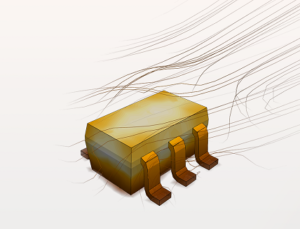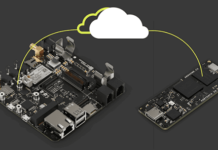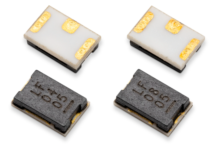
SimScale is announcing a free webinar on November 20 to teach engineers how to simulate complex electronics in a much simpler way, using thermal resistance models. Along with an introduction to online simulation in the cloud, attendees can also expect useful advice on evaluating thermal resistance.
Electronics are shrinking, with microelectronics being used in everyday devices that people expect to be faster yet higher performing than ever before. While technologies might be becoming more compact, their makeup remains complex with a number of diverse materials being used. Thermally conductive metals, bonding adhesive, epoxy, ceramic, alloys; all elements in terms of material properties and detail contribute to complex thermal properties, which are important when it comes to predicting junction temperature and ensuring the component will not overheat throughout.
Computational fluid dynamics (CFD) is commonly used to thermally test electronics design to ensure that the temperatures of the component to not exceed their limits. However, performing CFD analysis on detailed models can be complex and expensive, and is often not necessary. If you think of a PCB or a chip, carrying out thermal analysis would require a complicated simulation setup and the meshing process alone of a detailed model demands time and patience. Thermal resistance network models simplify the process.
Thermal resistance network models represent the complex characteristics of an electrical component in a simple form in order to make it easier to carry out a thermal analysis. Using thermal resistance models in CFD allows an engineer to obtain reliable results while keeping the simulation simple. Many engineers are used to simulating with detailed models for thermal analysis but recognize the need for faster analysis. Thermal resistance network models can offer this, shortening design cycles to support engineers with design optimization. But adopting a new approach requires new knowledge and engineers can learn more about thermal resistance models in this upcoming webinar.
Join SimScale in a webinar led by an expert engineer to learn more about thermal resistance network modelling, how to use such models, and how you can find resistance values if not provided by the product manufacturer.
Participants will learn:
- How detailed models are used to calculate the thermal resistance
- How to improve the robustness of conjugate heat transfer simulations for electronics cooling projects while maintaining the accuracy
- How to set up a simulation with SimScale in the cloud
Attending doesn’t require any simulation knowledge or costs. As for the software needed, SimScale provides free access to the Community account.
Register here for this webinar and join online on November 20, 11:00 A.M. EDT/ 05:00 P.M. CET. Registrants who are unable to attend the live webinar are recommended to sign up via the same link to receive the recording by email.


















